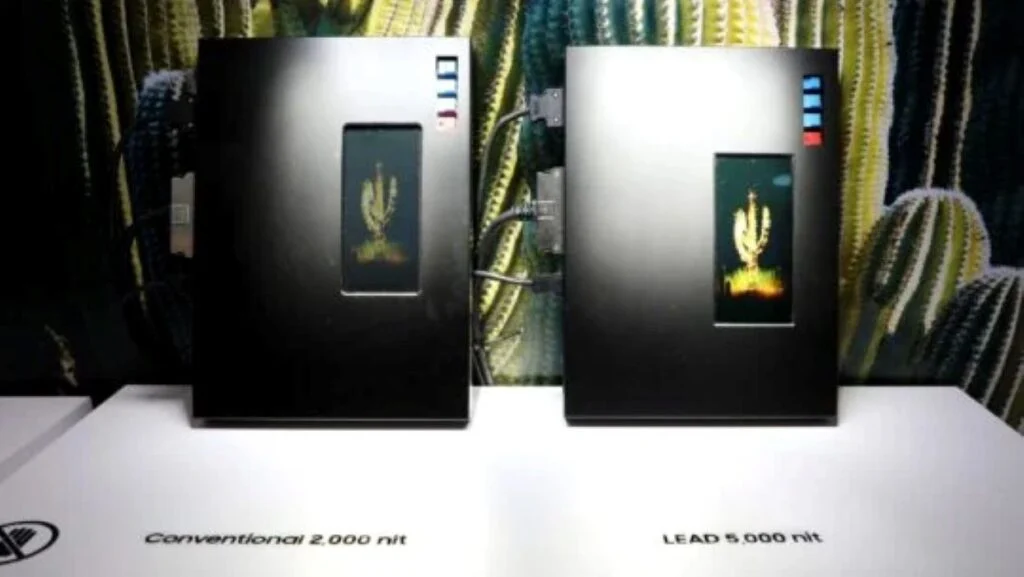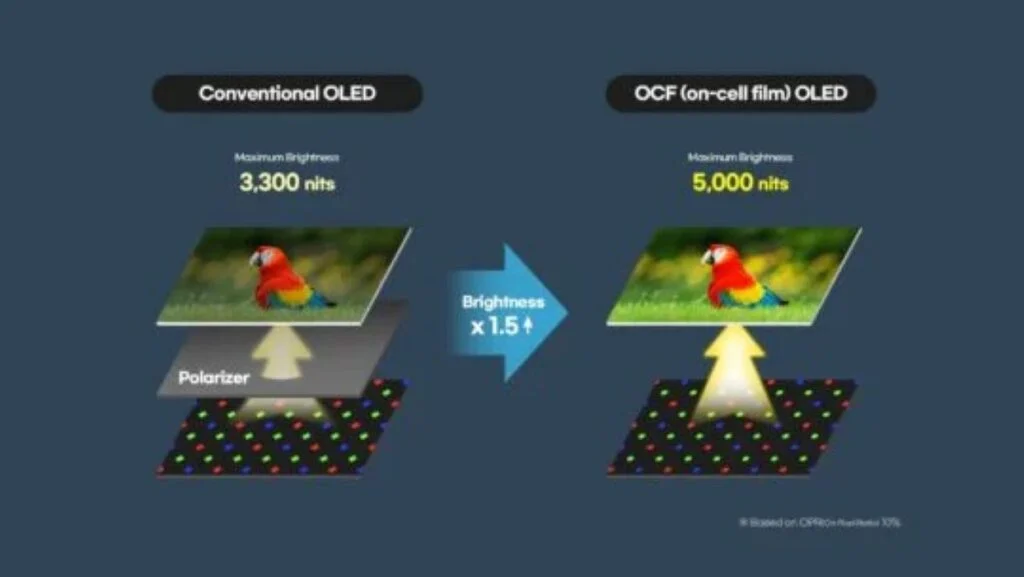Samsung has unveiled an innovative OLED panel that can achieve an impressive peak brightness of 5,000 nits. This advancement has the potential to transform the display standards for mobile devices, including smartphones, smartwatches, and laptops. The company is presenting this cutting-edge panel at the MWC 2025 exhibition in Barcelona, Spain.
A Significant Leap in Brightness and Power Efficiency
The latest OLED panel incorporates a technology known as On-Cell Film (OCF), an innovation by Samsung that eliminates the necessity for a polarizer. Traditionally, polarizers are employed to obstruct ambient light but can diminish OLED brightness by as much as 50%. By omitting the polarizer, Samsung has succeeded in creating a display that is not only brighter but also more energy-efficient.
The OCF II OLED panel is capable of achieving a peak brightness of 5,000 nits within a 10% window (representing 10% of the screen area), marking a notable advancement compared to competitors, whose brightness claims are often based on much smaller window sizes (1% or 5%).

In practical applications, such as movie viewing, the panel can reach brightness levels of up to 3,000 nits, which is commendable and surpasses the performance of the Galaxy S25 Ultra under similar conditions.
However, the focus is not solely on brightness. Enhancing power efficiency is paramount, particularly since most devices utilizing these displays operate on battery power. Samsung asserts that these brightness levels are achieved with 1.5 times greater efficiency than previous models, allowing for the same brightness to be sustained with only 63% of the power consumption. This advancement leads to longer battery life, decreased heat generation, and an extended lifespan for the display.
Slimmer Design and Broader Applications
The elimination of the polarizer enables Samsung to produce its OLED panels with a thickness reduction of 20% compared to traditional designs. This advancement was initially launched with the Galaxy Z Fold 3 and is now being applied to bar-shaped smartphones and even rollable laptops.
While this may appear to be merely another incremental enhancement in brightness and efficiency, it represents more than that. Samsung is not the sole dominant force in the display sector.
Chinese manufacturers such as BOE have made significant improvements, gaining in both brightness and efficiency in the last couple of years. This innovation from Samsung Display is anticipated to heighten competition and encourage rivals to prioritize innovation, ultimately benefiting consumers.
As stated by Joohyung Lee, Head of Mobile Display Business at Samsung Display, the company is committed to sustaining its leadership in the display market through ongoing innovation.
For more daily updates, please visit our News Section.

